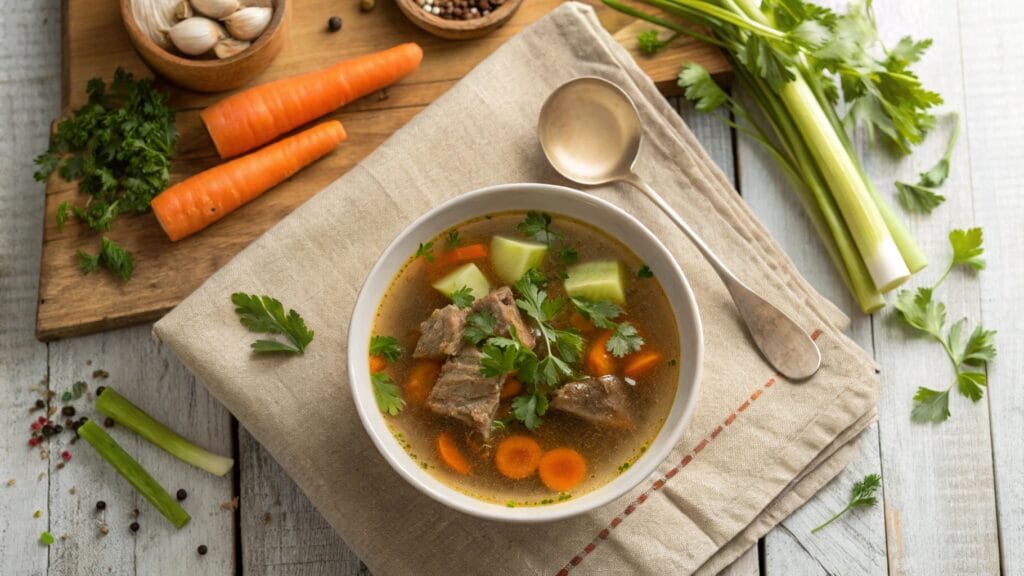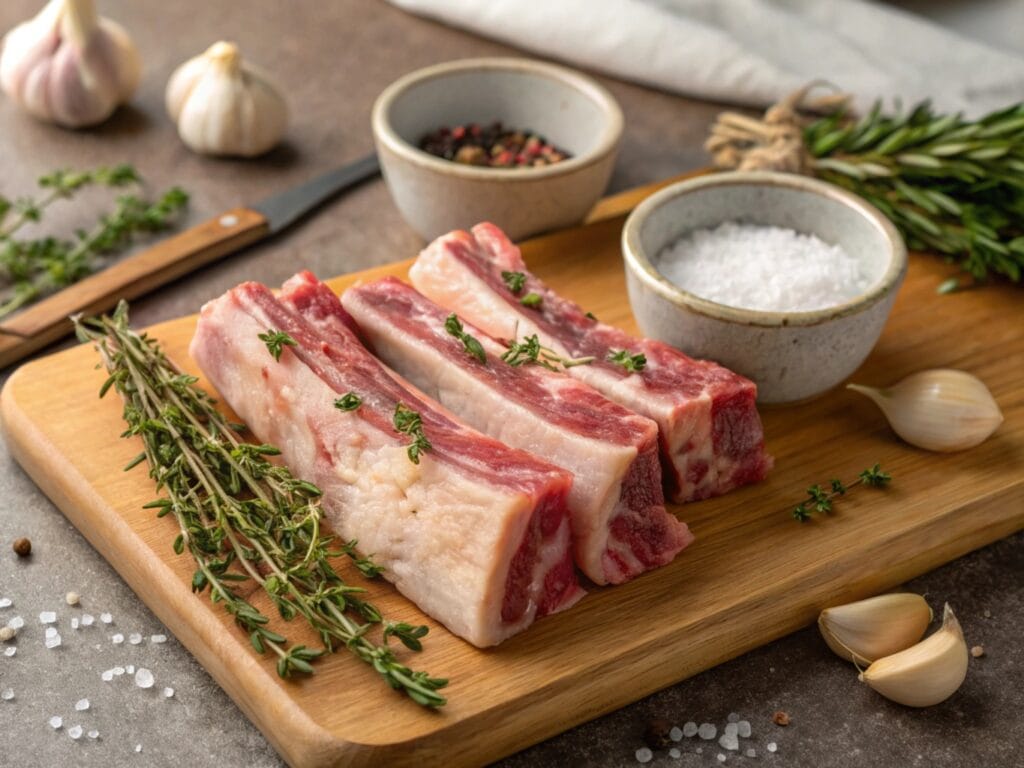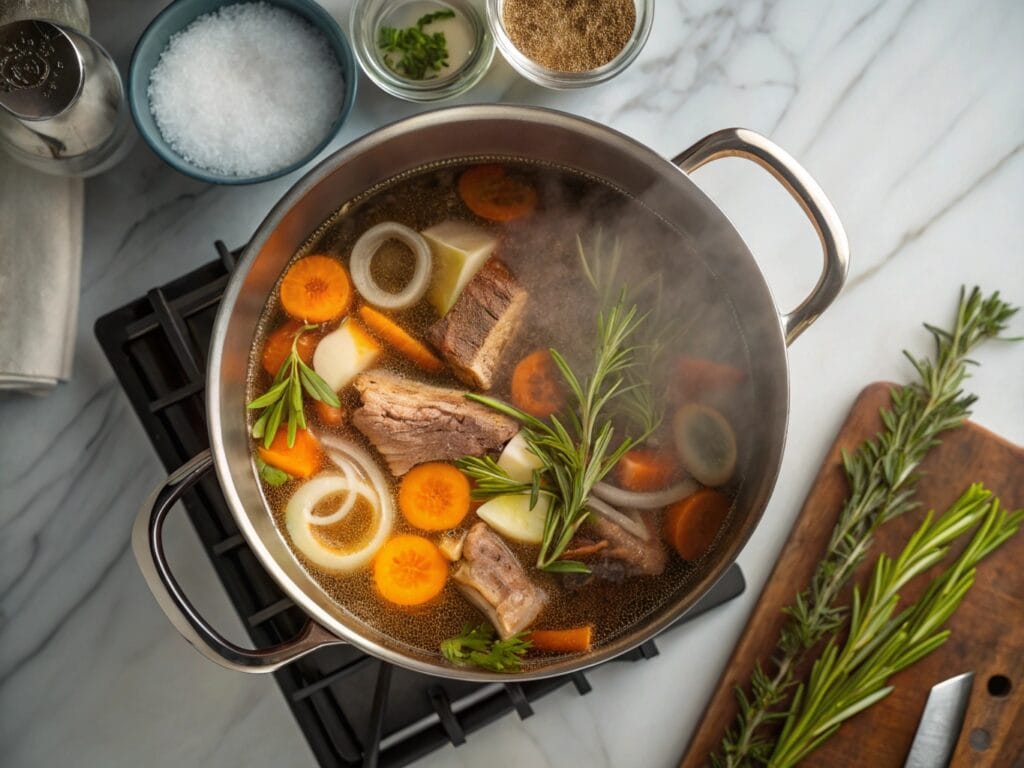Soup bones have been a staple in kitchens worldwide, used to create flavorful broths and nutrient-rich stocks. But the question remains: Are soup bones good to eat? This article dives deep into the nutritional benefits, potential risks, and culinary uses of soup bones, offering insights into their health impact and role in modern diets. Whether you’re curious about bone marrow’s superfood status or simply wondering if gnawing on a soup bone is a good idea, we’ve got you covered.

Introduction
What Are Soup Bones?
Soup bones, often referred to as marrow bones or soup stock bones, are the skeletal remnants of animals like cows, chickens, or fish. These bones are prized for their rich flavors and dense nutrients, making them a cornerstone in broth-making. They typically include some attached meat, cartilage, and the all-important marrow, which is packed with health benefits.
Historical and Culinary Significance
The use of soup bones dates back to ancient civilizations, where nothing went to waste. From traditional European stews to Asian broths like pho, soup bones have been celebrated for their ability to transform humble ingredients into hearty, nourishing meals. They’ve not only been a culinary staple but also a natural remedy in many cultures.
Why the Interest in Eating Soup Bones?
Lately, there’s been a surge of interest in using bones for more than just broth. From bone broth diets to discussions about the edible nature of softened bones, people are curious about the broader applications of these underappreciated kitchen staples. With growing awareness of food sustainability and nutrition, soup bones have found their way back into the spotlight.
Nutritional Benefits of Soup Bones

Are soup bones good to eat? Absolutely! These overlooked kitchen staples are packed with essential nutrients that benefit the body in multiple ways. Let’s break down the nutritional value of soup bones and why they deserve a spot in your diet.
Micronutrients in Bones
Soup bones are rich in calcium, phosphorus, and other vital minerals. These minerals are essential for strong bones, healthy teeth, and proper muscle function. When simmered in water, these nutrients are released into the broth, making it a nutrient-dense superfood. Trace elements like magnesium, zinc, and iron further boost its health appeal.
Moreover, the marrow within bones provides a concentrated source of fat-soluble vitamins like A and K. These vitamins support immune function and promote cell regeneration, making soup bones an excellent addition to any diet.
Bone Marrow: A Hidden Superfood?
Bone marrow is a powerhouse of nutrition, brimming with healthy fats, collagen, and stem cells. Eating or incorporating marrow into broths provides the body with energy and supports brain health. Traditional cultures often prized marrow for its ability to heal and nourish.
Some people even ask, Are soup bones good to eat directly? While chewing on bones themselves isn’t ideal, the marrow inside is not only edible but highly beneficial.
Collagen and Gelatin: Impact on Skin and Joints
Simmering soup bones releases collagen and gelatin, which are key components for joint health and skin elasticity. These proteins reduce joint pain, improve mobility, and give the skin a youthful glow. Regular consumption of collagen-rich bone broths has also been linked to improved digestion and stronger nails and hair.
Health Benefits of Consuming Soup Bones
Beyond nutrition, soup bones offer a range of health benefits that can transform your wellness journey. Here’s why you might want to make them a regular part of your meals.
Bone Broth and Digestive Health
A well-made broth from soup bones is gentle on the stomach and great for gut health. The gelatin released during cooking helps seal the gut lining, improving conditions like leaky gut syndrome and reducing inflammation. If you’re wondering, Are soup bones good to eat? The answer lies in their remarkable ability to promote digestive health.
Strengthening Bones and Joints
It’s no surprise that consuming bones supports bone health. The nutrients in soup bones, especially calcium and magnesium, strengthen your skeletal system. Collagen also contributes to cartilage repair, making soup bones a natural remedy for joint pain or arthritis.
Boosting Immunity and Reducing Inflammation
Soup bones are a natural source of amino acids like glycine and proline, which play a role in reducing inflammation. This makes them perfect for boosting immunity, especially during flu season. Bone broths made from soup bones are often recommended as a comforting and healing food for illnesses.
Risks and Considerations
While soup bones offer a host of benefits, there are some risks to consider when incorporating them into your diet. It’s important to weigh these factors to decide if they’re the right fit for you.
Are Bones Safe to Eat?
The safety of eating bones largely depends on preparation. Softened bones from long cooking times, such as those in broths, may be safe to chew and consume in small quantities. However, harder bones can splinter, posing a choking hazard or risking damage to the digestive tract. So, when asking, Are soup bones good to eat? ensure they’re properly cooked and handled.
Potential Allergens and Contaminants
Soup bones can harbor allergens or contaminants like antibiotics or heavy metals, especially if sourced from animals raised in non-organic conditions. Opt for bones from grass-fed or organically raised animals to minimize these risks.
How Over-Processing Affects Nutritional Value
Over-boiling or over-processing soup bones may strip them of some nutritional benefits. For instance, excessively long boiling times can degrade certain vitamins, reducing the broth’s potency. Balance cooking time with the desired nutritional outcome.
Culinary Uses for Soup Bones

Soup bones are incredibly versatile in the kitchen, enhancing a variety of dishes with their rich flavors and nutrients.
Making Bone Broth and Stock
The most popular use for soup bones is making broths and stocks. Simmering bones with vegetables and herbs extracts collagen, gelatin, and minerals into the liquid, creating a flavorful and nutrient-dense base for soups, stews, and sauces. For a detailed guide, check out this Soup Bones Guide.
Recipes Featuring Soup Bones
Soup bones shine in recipes like beef stew, pho, or chicken noodle soup. These dishes not only taste amazing but also deliver a nutrient boost. If you’re exploring, consider trying bone-based recipes featured on Tangle Recipes, such as their Soup Bones Guide for inspiration.
Best Practices for Cooking with Soup Bones
To maximize flavor and nutrition, roast bones before simmering them for stock. Roasting caramelizes the marrow and enhances the broth’s richness. Additionally, adding a splash of vinegar to the water helps extract more minerals from the bones during cooking.
Soup Bones in Modern Diet Trends
In recent years, soup bones have found a renewed place in modern dietary trends. But you may still wonder, Are soup bones good to eat? Let’s explore how they fit into today’s health-focused lifestyles.
The Paleo and Keto Connection
Soup bones align perfectly with the Paleo and Keto diets, which emphasize whole, nutrient-dense foods. These diets often rely on broths made from soup bones to provide essential nutrients like collagen and healthy fats. For Keto followers, the high-fat content of bone marrow adds flavor and energy while keeping carbohydrate counts low.
Paleo enthusiasts appreciate the connection to ancestral eating, where no part of the animal went to waste. Soup bones, rich in minerals and amino acids, complement these dietary principles beautifully.
Bone Broth in Popular Culture
Bone broth, made from soup bones, has taken the health and wellness world by storm. From trendy cafes serving steaming cups of broth to pre-packaged options in grocery stores, this superfood has gained a loyal following. Many fitness enthusiasts and celebrities tout its benefits, from glowing skin to improved joint health.
For those asking, Are soup bones good to eat? modern trends clearly show they’re more than just good—they’re in high demand.
FAQs
Can You Eat Bones After Cooking Them?
Yes, but only under certain conditions. Softened bones, like those from fish or well-cooked chicken, may be eaten safely in small amounts. However, harder bones should be avoided as they can splinter and cause harm. If you’re still asking, Are soup bones good to eat? it’s best to consume the nutrient-rich broth they produce instead.
How Do You Make Bones Safe to Eat?
Cooking is key. Slow-cooking or pressure-cooking soup bones softens them, making them safer to handle and occasionally consume. Adding a bit of vinegar during cooking can further break down the bones and release minerals into the broth.
What Types of Bones Are Best for Soup?
Marrow-rich bones, like beef femurs, and joints, like knuckles, are ideal for soup-making. Chicken backs and fish bones also work wonderfully for creating flavorful broths. For more on selecting the best soup bones, visit Tangle Recipes’ What Bones Are Best for Soup.
Conclusion and Final Thoughts
Summarizing the Nutritional and Culinary Appeal
Soup bones are more than just a base for broths; they’re a treasure trove of flavor and nutrition. Whether you’re preparing a hearty stew or sipping bone broth for its health benefits, soup bones provide a range of essential nutrients like collagen, calcium, and healthy fats. They’re a natural way to support joint health, improve digestion, and enhance overall wellness. If you’re still wondering, Are soup bones good to eat? the evidence overwhelmingly supports their value in a balanced diet.
Should You Include Soup Bones in Your Diet?
The answer is a resounding yes—provided they’re sourced and prepared properly. Opt for high-quality bones from grass-fed or organically raised animals, and take care to cook them thoroughly to unlock their full nutritional potential. While eating the bones themselves may not always be practical or safe, the broths they produce are an incredible addition to your meals.
For anyone looking to embrace more sustainable, nutrient-rich eating habits, soup bones offer a delicious and versatile option. So the next time you see soup bones at the market, don’t hesitate—give them a try!

